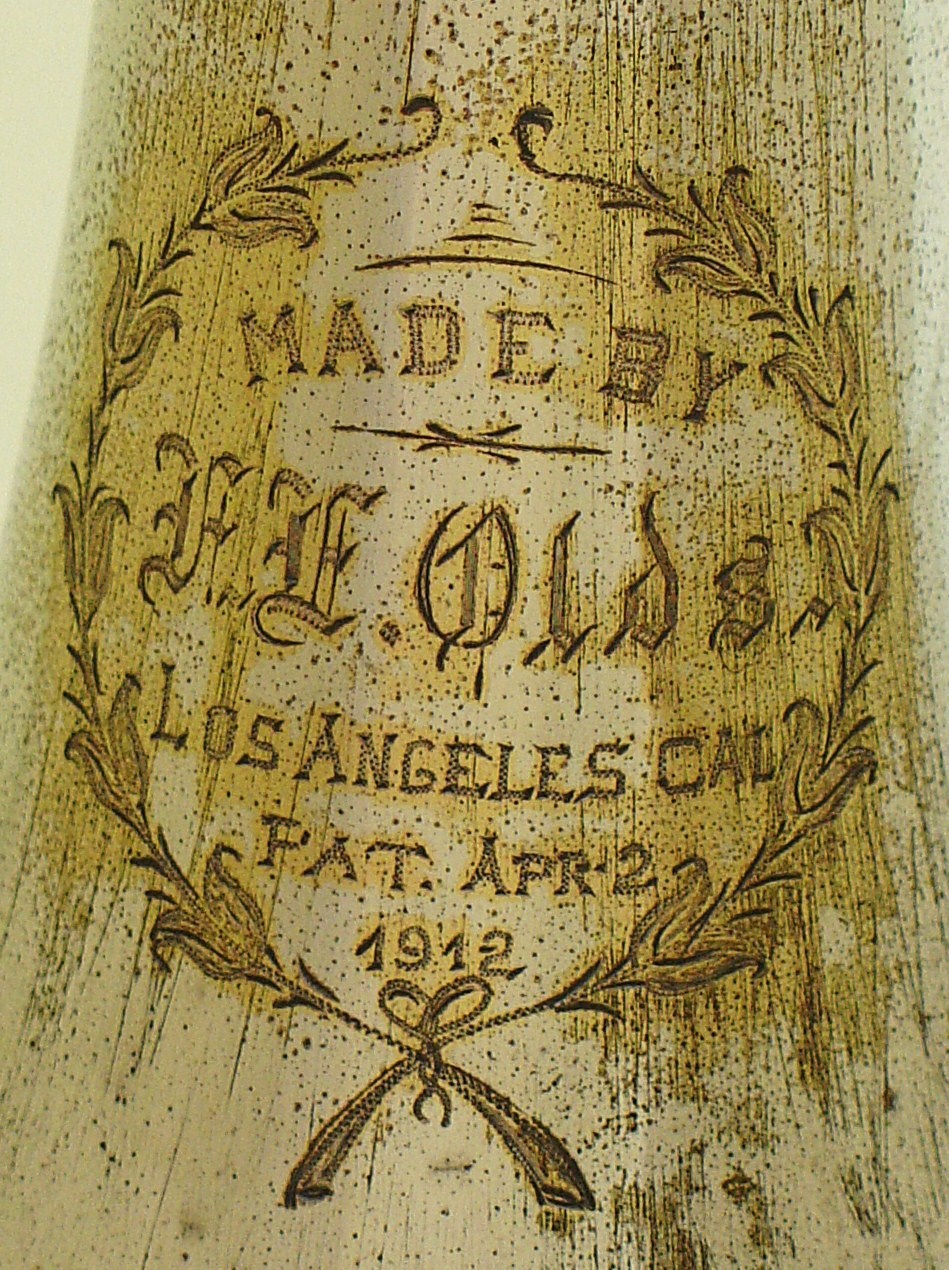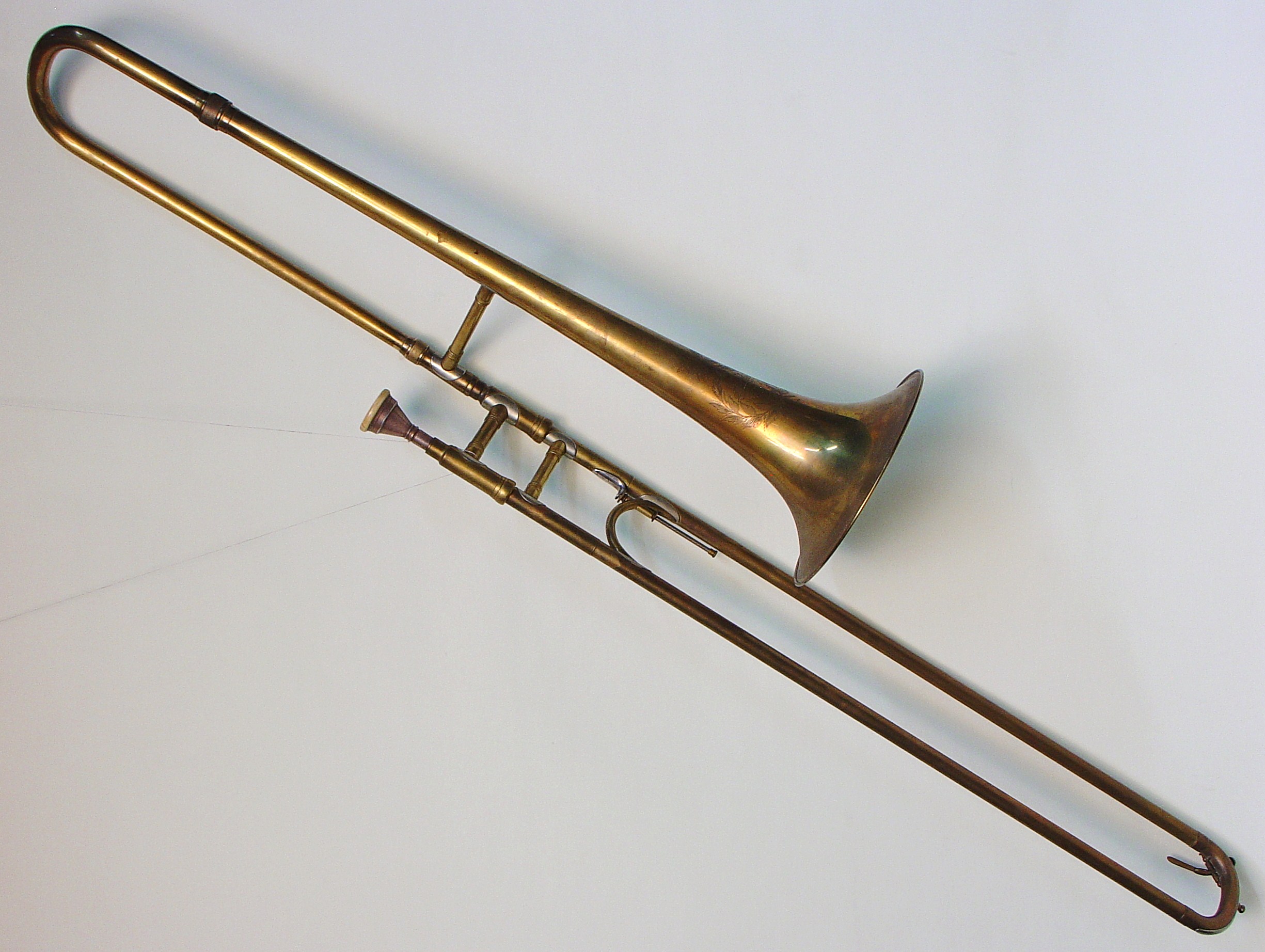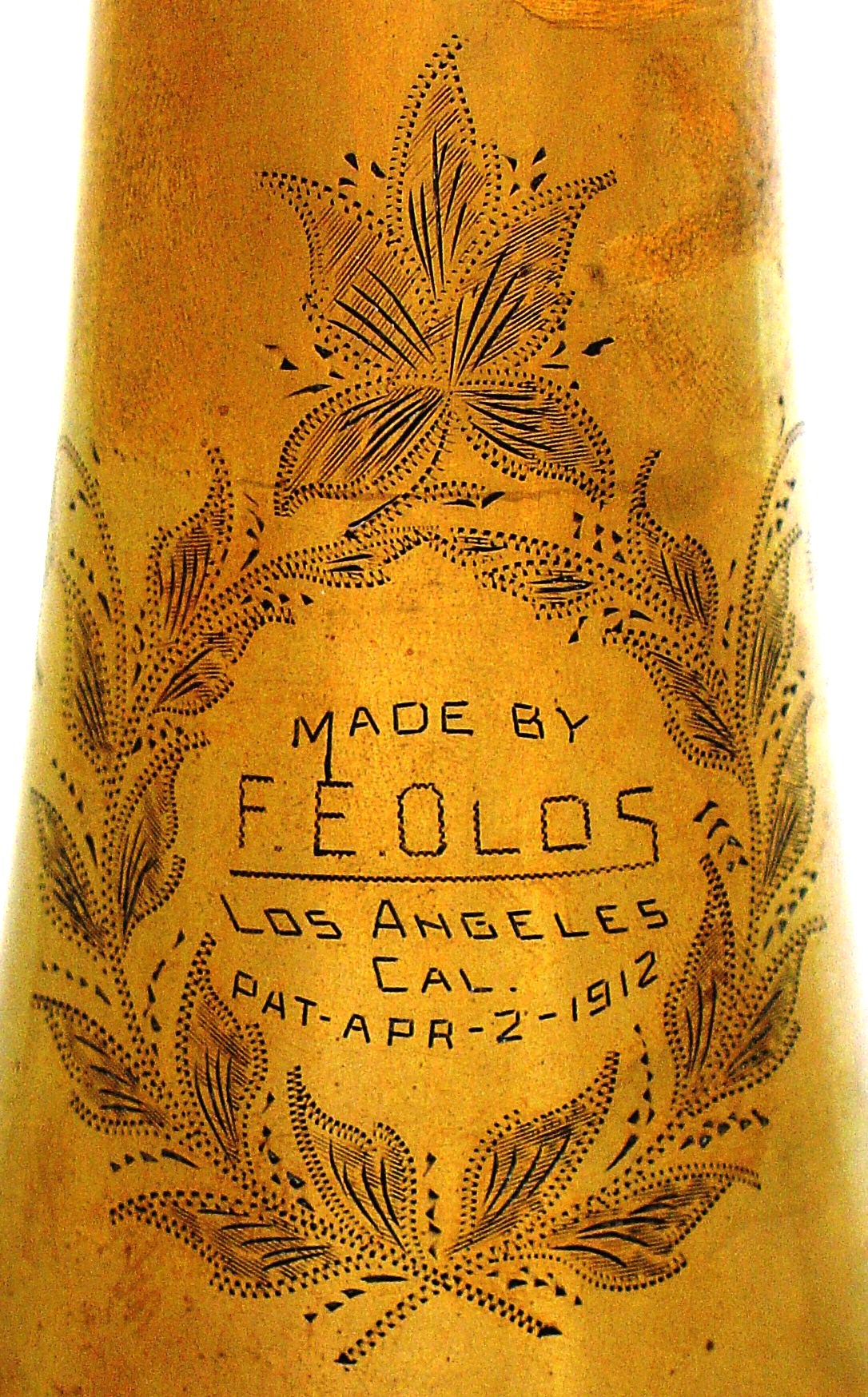Early Olds Tromboness
Early Olds trombones are fairly easy to come by since demand in the collector's market has continued to overlook them. They are high quality and of very innovative design, influencing all other trombone makers.
The first image, top left, is the center spread from the 1925 catalog. The other images are three and a half of the earliest that I've collected over the years. These were all made before 1922 when operations were moved out of the barn behind the Olds' family home on 24th Street in what is part of down town in Los Angeles today. It is the earliest of these I've never owned the slide and it has no serial number and its provenance lends mystery to its survival. When the factory contents were auctioned off in 1979, big rolling bins full of seconds and overruns of parts were sold one or more at a time. Dan Rauch, the French horn maker, had looked over these bins to determine which might contain parts that he could use. This trombone bell just happened to be thrown into one of the bins that he purchased. He had it hanging around his shop for a few years, but when I expressed some interest he gave it to me. I don't have any way of knowing if it had been in the factory from the time that it was made or found its way back at a later date, but it appears to be among the earliest of Olds' production. It was a high pitch trombone and the bell rim diameter measures 6". Olds called this the "Solo Model" and, not surprisingly the smallest bell that Olds offered. Photos of another, serial number 163, with virtually the same engraving were sent to me by its owner and I believe that they are of similar age. Dale Olson owns number 162, but I haven't examined it yet.
The next two photos to the right are serial number 260 and marked "M" for Medium Bore. The bell rim diameter is 7" and the bore measures .480". The slide stockings and inside slide tube are drawn from a single tube as in later Olds trombones rather than the more common practice of that time which was soldering a sleeve over tube. It does differ from the later Olds trombones in that the inside slide tube maintains its wall thickness, resulting in a larger bore through the area of the stocking. Later Olds and all modern trombones have an increased wall thickness creating the stocking without changing the bore size in that area. The mouthpiece appears to be original.
The next is marked "LM" (Large Medium) and with serial number 1619. The bell rim diameter is 7 1/2" and the dual bore measures .495"/.509" making this very similar in dimensions to later models such as Standard, Super, Recording and others. This is the best preserved of this group, appearing to have been used very little. It retains its original ivory rim and cup mouthpiece as illustrated in the 1925 catalog. A very interesting feature of this trombone is that the branch or back curve of the bell is removable by unscrewing the nuts at each end. It would have originally come with a second, shorter branch to tune it to high pitch, which was still being used by many bands at the time.
The last (out of order chronologically) is serial number 704 and also marked "L" for Large Bore. This has an 8" bell and dual bore measuring .509"/.535". The original owner of this trombone was Frank Henniger, who played in the St. Louis Philharmonic Orchestra in the early 20th Century including at the 1904 World's Fair (before this trombone was built). I don't have any documentation that this is the trombone that he used in the orchestra, but it seems likely, since it is an unusually large bore for the time, and larger trombones were favored in orchestras, especially those of Germanic traditions. The mouthpiece pictured is not original to this trombone but is a very early Olds mouthpiece and much larger that any others that I have found from that era.
The last photo below shows these four bells in order of size.









